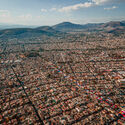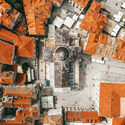
City Science, a rapidly expanding profession, is the scientific study and engineering of urban systems. It uses advanced technologies, big data, and complex systems physics to tackle challenges such as decarbonization, mobility, and livability. At its core, city science is about data-driven solutions. It employs statistics, modeling, and artificial intelligence to reveal the hidden dynamics of cities, from energy use to human movement. It employs strategies that reduce carbon emissions, enhance efficiency, and foster urban environments that are more sustainable and resilient.














_of_one_of_the_big_families_of_Niongono_(submitted_by_Daniel_Schumann).jpg?1433337453&format=webp&width=640&height=580)
.jpg?1433337502)
.jpg?1433337430)
.jpg?1433337423)
.jpg?1433337546)
_of_one_of_the_big_families_of_Niongono_(submitted_by_Daniel_Schumann).jpg?1433337453)